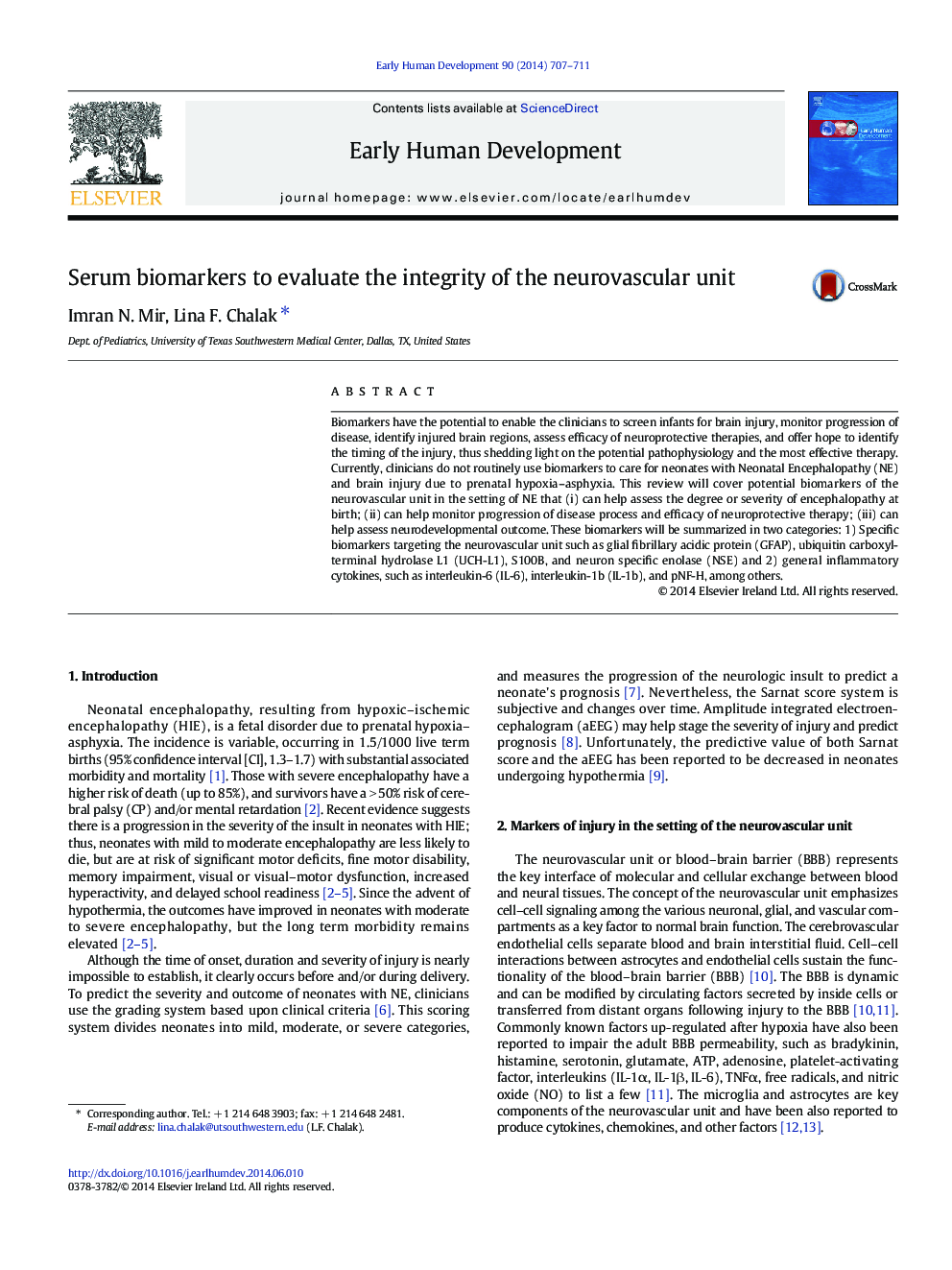| Article ID | Journal | Published Year | Pages | File Type |
|---|---|---|---|---|
| 3916654 | Early Human Development | 2014 | 5 Pages |
Biomarkers have the potential to enable the clinicians to screen infants for brain injury, monitor progression of disease, identify injured brain regions, assess efficacy of neuroprotective therapies, and offer hope to identify the timing of the injury, thus shedding light on the potential pathophysiology and the most effective therapy. Currently, clinicians do not routinely use biomarkers to care for neonates with Neonatal Encephalopathy (NE) and brain injury due to prenatal hypoxia–asphyxia. This review will cover potential biomarkers of the neurovascular unit in the setting of NE that (i) can help assess the degree or severity of encephalopathy at birth; (ii) can help monitor progression of disease process and efficacy of neuroprotective therapy; (iii) can help assess neurodevelopmental outcome. These biomarkers will be summarized in two categories: 1) Specific biomarkers targeting the neurovascular unit such as glial fibrillary acidic protein (GFAP), ubiquitin carboxyl-terminal hydrolase L1 (UCH-L1), S100B, and neuron specific enolase (NSE) and 2) general inflammatory cytokines, such as interleukin-6 (IL-6), interleukin-1b (IL-1b), and pNF-H, among others.
